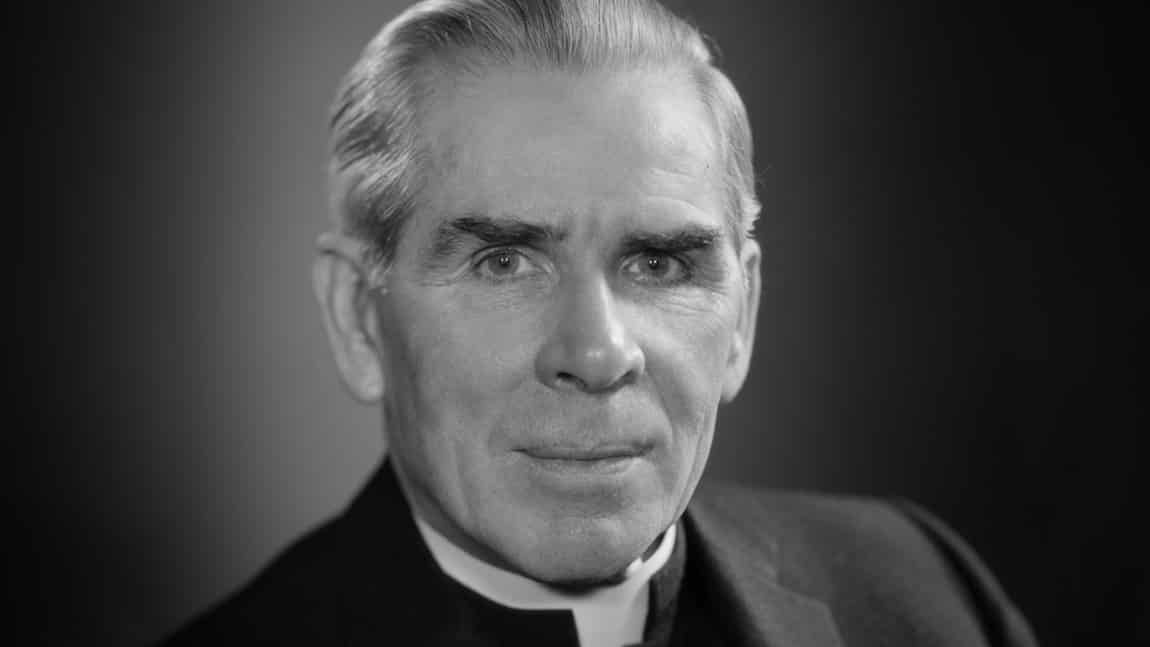Comedians, playwrights and pundits have had a field day with the institution of marriage. For generations, it has served as fertile ground for sitcoms, the stage and cinema from the Bickersons, the Honeymooners and Hennie Youngman to Who’s Afraid of Virginia Wolf and Gods of Carnage. The battle of the sexes has historically pitted the reasoned stubbornness and intractability of the male against the nurturing extravagance and fitful volatility of the female. For the last half century this battle has evolved into a full-fledged culture war.
The starting point for this conflict dates back to the fall of man in the Garden of Eden. According to Genesis, God created Adam and Eve in His image and likeness and forbade them to eat the fruit from the tree of knowledge of good and evil. The serpent enticed Eve to break God’s only rule and seduce Adam as well. After they had sinned they immediately become ashamed of their nakedness. Since then men and women have been suffering from the after effects of that lost paradise both as partners and rivals.
In an attempt to combat the forces of evil unleashed in the Garden, men and women joined their bodies and lives together in matrimony in a common attempt to build the family. According to Sociology 101 the human family is the essential building block of human civilization. Because of its vital importance to moral and political freedom, the institutions of marriage and the family have been under assault by the autocratic forces of the revolutionary left since the end of the 18th century.
The last half of the 20th century and the early 21st century witnessed the harvesting of the poisonous fruit of generations of anti-family behavior. Author Mitch Pearlstein underscored the importance of the social and moral fragmentation of the family in his book, From Family Collapse to America’s Economic Decline. According to his extensive research, America’s damaged children have perpetuated a seemingly endless cycle of divorce, illegitimacy, school truancy, joblessness, and poverty that threatens, not only the future of traditional marriage but also the pillars of Western Civilization.
Pearlstein also connected the dots from family fragmentation and social failure in school, the growing social cleavage of class warfare and a loss of America’s competitive advantages, to America’s decline as the world’s leading super power. The only thing he failed to do was connect this decline to the grand dot of the Marxist conspiracy of Antonio Gramsci and the Frankfurt School and their sinister war on the family.
The Marxist attack on women, their marriages and families has been devastating. Behind the scenes, Modern Feminism has been the driving engine of the Women’s Movement since the early 1960s. It had supplanted the early 19th century movement that was more interested in economic equality and suffrage rights.
In stark contrast to its more radical successors the early feminists, such as Susan B. Anthony, Lucretia Mott and Elizabeth Cady Stanton were all pro-family and prolife. The radical feminists marched to the Marxist drummer of the Frankfurt School’s acolyte, Betty Friedan and later Gloria Steinem.
It was Mrs. Friedan, an disciple of Marxist Herbert Marcuse who launched the feminist movement with her 1963 book, The Feminine Mystique. Masquerading as an ordinary housewife, Friedan lampooned traditional stay-at-home mothers, who chose family over the workplace. Steinem provided these new feminists with a surrealistic battle cry of a woman needs a man like a fish needs a bicycle. The movement swiftly became populated with misandrists who literally hated all men and everything they do.
One of the most devastating concerns for the relationship between the sexes has been the ascendancy of women in the workplace. The stereotype of Rosie the Riveter has been replaced by the massive influx of women into virtually all the professions. In the 1970s and 1980s, the federal government embraced an industrial revolution that encouraged women to enter the labor force.
Since the 1980s women have flooded colleges while male enrollment has stagnated. Women hold a numerical edge on many campuses that used to be dominated by men. As women rapidly advanced from industrial jobs and clerical jobs into the major professions, the traditional business culture collapsed. Women now compete with men in everything from the courtroom, the boardroom and the ivy-covered walls of academia to the clerical pulpit and even the broadcast field with men at all levels.
This is true largely to the delicious irony inherent in a long legacy of affirmative action that was legislated to benefit racial minority students but became useful for the women’s movement. As a result the professional world is no longer the sole domain of men. Many of them do not know how to cope with the sudden female ascendancy.
The working class, which has long defined masculinity, is slowly turning into a matriarchy. As women gradually occupy jobs, including managerial roles that were once the province of the male head of household, men now find themselves banished from their comfort zones. Under the banner of male oppression, radical feminists have knocked the male from his preferred status as breadwinner and protector of the American family.
By early in 2011 the nation witnessed the first time in American history where women now hold a majority of the nation’s jobs. This scenario predictably reaped its negative impact on men, their marriages and the families. The tragic irony is that in seeking total equality with men, many have become just like them, adopting all the sordid behaviors that their female forbears despised and fought to prevent.
The success of women in breaking the proverbial glass ceiling of corporate America has shattered more than glass. Women’s health has seriously declined as they succumb to heart attacks and stress diseases, nearly equal to those of their male counterparts. Those women who try to be supermoms, holding down simultaneously jobs and family, are swimming upstream.
Feminist advances may also be associated with the decline of marriage. The traditional marriage of a man and a woman is a complex institution that throughout history was used to forge alliances, and create family loyalties. For thousands of years, marriage had been a primarily economic and political contract between two people, negotiated and policed by their families, church, and community.
Thanks to the Sexual Revolution of the 1960s the proportionate numbers of married women in their early 30s is lower than any other time in statistical history. In 1960, the median age of first marriage in the U.S. was 23 for men and 20 for women. Those numbers have risen to 29 for men and 27 for women today. The marriage rate for American couples is rapidly approaching that of the Great Depression. As many as 40% of couples now choose to cohabit instead of making their marriage vow. American society has readily accepted this as a legitimate part of its social mores.
Their future brought with it reproductive technologies, such as in vitro fertilization that have virtually eliminated men from any direct role in pregnancy and the family. Many women have radically altered their notion of biological motherhood as having little or no bearing on their self-image as women. Single motherhood has also lost its stigma. Today 40% of children are born to single mothers. Since 1976, the percentage of women in their early 40s who have never given birth has nearly doubled. The relative decline of men, women and the institution of marriage has been a societal disaster for the nation at large. Sexual role models have been so skewered that the society accepts the erroneous idea that men and women are fungible, that is, they can easily replace one another in all roles that family and society necessitate.
In the Marxist fusillade that has gravely impacted women and their families, men have been more than just collateral damage. Men have been the dominant sex since the dawn of human history. For the first time in human history, that is no longer the case.
As women have moved into every realm that used to be dominated by men, this has brought a lot of tension in their relationships. It has also led to an epidemic of divorce, more single-mother families and grave social fragmentation. Men are more distant from their families and their children than ever before. In 1960, only 11% of children in the U.S. lived apart from their fathers. In 2010, that had risen to 27%. Fewer men turn to God in their identity crisis.
Men are severely handicapped in American society. Too many have become emotionally crippled after growing up in single parent homes, or because their sense of self-worth was defined through the materialistic illusions fostered by video games and beer commercials. Young men without a job or a college degree are deeply mired in a prolonged adolescence that seriously undermines the nation’s ability to defend itself and escape the traps of poverty. Millions of these uncommitted men suffer from a maturity deficit that shows few signs of abatement.
In his new book, The Book of Man: Readings on the Path to Manhood, former Education Secretary William J. Bennett opined that for the first time in history, women are better educated, more ambitious and arguably more successful than men. It is incumbent on the American people to return the family to its nuclear form. Bennett is just one voice of many social conservatives who have issued concern about the family meltdown and its devastating effects on the American culture.
Author Brad Minor has a unique solution for returning men, not to their old way of dominance, but to a new relationship with women that might just turn the tide. Every man should strive to be The Complete Gentleman. Anchoring his argument to the medieval traditions of knightly prowess, and the Victorian ideal of gentlemanly decorum, Minor believes that it is time for men to reassert their love and respect for women who strive, not to compete, but to serve and complement, all in the name of the family.
Reviving a 1000-year tradition of chivalry, honor, and heroism, Minor contends that true manhood is an ancient ideal based on service to God, country, family, and friends. Minor’s modern knight cultivates a martial spirit in defense of the true and the beautiful. As a lover and protector he must demonstrate that he treasures the woman in his life, by humbly giving her what she needs so she can free him from the tyranny of his own ego.
Minor’s critics say he failed to heed the universal call to holiness that is superior to that of the mere gentleman. Cardinal John Newman believed a real man was someone who discerns the end in every beginning, which means he lives more fundamentally, less superficially and is patient and forbearing on philosophical principles that are not based on social expediency. Likewise the gentleman submits to pain, because it is inevitable, to bereavement, because it is irreparable, and to death, because it is his destiny.
In his encyclical letter Evangelium Vitae (The Gospel of Life) Pope John Paul II countered the Gramscian strategy that has unsettled America’s traditional family structure.The pope believed in transforming culture so that it supports life and women occupy a place in thought and action, which is unique and decisive. He impressed upon women to promote a new feminism, which rejects the temptation of imitating models of male domination, in order to acknowledge and affirm the true genius of women in every aspect of the life of society and overcome all discrimination, violence and exploitation.
Saint John Paul II recognized that radical feminism was an agent of the culture of death. In attempting to expose the roots of the culture of death, the pope focused on the ideas that engendered virulent moral problems such as sexual promiscuity, abortion and euthanasia, as well as bioethical problems such as embryo experimentation and surrogate motherhood. These ideas constitute the core of his lectures on the Theology of the Body that he developed over the course of four years. (TOB)
One can readily see the similitude of the pope’s TOB with Bishop Fulton J. Sheen’s Three to Get Married. Sheen’s classic explored the authentic meaning of married love, which is so intimately connected with earthly happiness so that to misunderstand its purpose and direction was to miss the meaning of life itself. He contended that any love that does not look to heaven descends into hell. Those who think they can be faithful in soul to one another, but unfaithful in body, forget that the two are inseparable.
Three to Get Married is textbook TOB. Those who separate sex and spirit are rehearsing for death. Human sexuality is not a push upwards from the beast, but rather a gift downwards from the Trinity. According to Sheen, all love ends in an Incarnation, even God’s. Behind the urge to procreate is the hidden desire of every human to participate in the eternal. The more a marriage union is based on the Divine, and the more the husband and wife are in harmony with God, the more they find in each other that eternal fascination and satisfaction which transcends earthly frailties and disappointments.
According to Saint Pope John Paul II, there will be no renewal of the Church and the world without a renewal of marriage and the family. Conversely there will be no renewal for men and women without a full acceptance and return to the truth of God’s plan for the body and human sexuality. Both Bishop Sheen and the Pope have provided the Church with a high-level approach that promises to restore mankind to its lost paradise.









?✝️